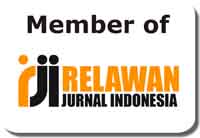Inquiry-based Learning in English Teaching at a Candidate School of IB PYP: Implementation and Benefits
Abstract
Keywords
Full Text:
PDFReferences
Alberta, L. (2004). Focus on inquiry: a teacher’s guide to implementing inquiry-based learning. Alberta: Learning Resource Center. Retrieved February 10, 2019, from http://www.learning.gov.ab.ca/k12/curriculum%0A/bySubject/focusoninquiry.pdf.
Brooks, J. G. & Brooks, M. G. (1993). In Search of Understanding: The Case for Constructivist Classroom. Alexandria FA: Association of Supervision and Curriculum Development.
Bruce, B. C., & Davidson, J. (1996). An Inquiry Model for Literacy across the Curriculum. Journal of Curriculum Studies, 28(3), 281–300.
Bruner, J. (1983). Child’s Talk: Learning to Use Language. Oxford: Oxford University Press.
Center, P. P. R. (2010). 21st Century Skills for Students and Teachers. Honolulu: Kamehameha Schools, Research & Evaluation Division.Research & Evaluation Division.
Creswell, J. W. (2014). Research Design Qualitative, Quantitative and Mixed Methods Approaches. California: Sage Publishing.
Fauziati, E. (2014). Methods of Teaching English as a Foreign Language (TEFL): Traditional Method Designer Methods Communicative Methods Scientific Approach. Surakarta: Era Pustaka Utama.
Fiore, E. D. (2016). Implementation of Inquiry-based Learning into Chinese as a Foreign Language Classes in International IB PYP Schools of Hong Kong.
Glaser, Barney G. & Straus, A. (1967). The Discovery of Grounded Theory; Strategies for Qualitative Research. London UK: Aldine Transaction.
Halliday, M. (1980). Three aspects of children’s language development: Learning language, learning through language, learning about language”. In Goodman, Y, Haussler, MH and Strickland, D (eds). Oral and Written Language Development Research. Urbana, Illinois, USA: National Council of Teachers of English.
International Baccalaureate. (n.d.). What is an IB education? In 2017. Switzerland: International Baccalaureate Organization (UK) Ltd.
International Baccalaureate. (2009). Primary Years Programme Language Scope and Sequence Handbook.
Kuhlthau, Carol C., Leslie K. Maniotes, A. K. C. (2007). Guided Inquiry: Learning in the 21st Century. Santa Barbara, California: Greenwood Publishing Group.
Lee, H. (2014). Inquiry-based Teaching in Second and Foreign Language Pedagogy. 5(6), 1236–1244. https://doi.org/10.4304/jltr.5.6.1236-1244
Organization, I. B. (2007). Making the PYP happen: A curriculum framework for international primary education. Wiltshire: Antony Rowe Ltd.
Piaget, J. (1955). The Language and Thought of the Child. Ohio: World Publishing Company.
Prince, M. J. and R. M. FelderPrince, M. J. and R. M. F. (2006). Inductive Teaching and Learning Methods: Definitions, Comparisons, and Research Bases. Journal of Engineering Education, 95(2), 123–138.
Purnomo, C. H. (2015). Manajemen Pembelajaran Kurikulum International Baccalaureate Primary Years Programme di SD Ciputra Surabaya. Scientific Journal, 2(5), 255.
Rejeki, S. (2017). Inquiry-based Language Learning (Ibll): Theoretical and Practical Views in English Classroom. English Franca, 01(02), 135–148.
Savage, Tom V. dan Armstrong, D. G. (1996). Effective Teaching in Elementary Social Studies (third edit). New Jersey (US): Prentice Hall.
Savage, M. J. & S. M. D. (2016). Living Transdisciplinarycurriculum: Teachers’ Experiences with the International Baccalaureate’s Primary Years Programme. International Electronic Journal of Elementary Education, 9(01), 1–20.
Setyawan, T. Y. (2017). Primary School Pre-Service Teachers’ Perspectives on Primary Years Program and Its Implementation. International Journal of Indonesian Education and Teaching (IJIET), 1(2), 194–205.
Sunaengsih, C. (2015). Pengaruh Model Pembelajaran Transdisciplinary terhadap Karakter Siswa pada Sekolah Internasional Berbasis International Baccalaureate. Mimbar Sekolah Dasar, 2(02), 170–177.
Vygotsky. (1978). Mind in Society. Cambridge MA: Hardvard University Press.
Yin, R. K. (2012). Applications of case study research (Third). Thousand Oaks, CA: Sage Publishing.
DOI: http://dx.doi.org/10.31332/lkw.v5i2.1297
Copyright (c) 2019 Heppy Mutammimah, Dewi Rochsantiningsih, Abdul Asib

This work is licensed under a Creative Commons Attribution-ShareAlike 4.0 International License.
Langkawi: Journal of The Association for Arabic and English indexed by:


















.png)
.png)

.png)
2.png)








